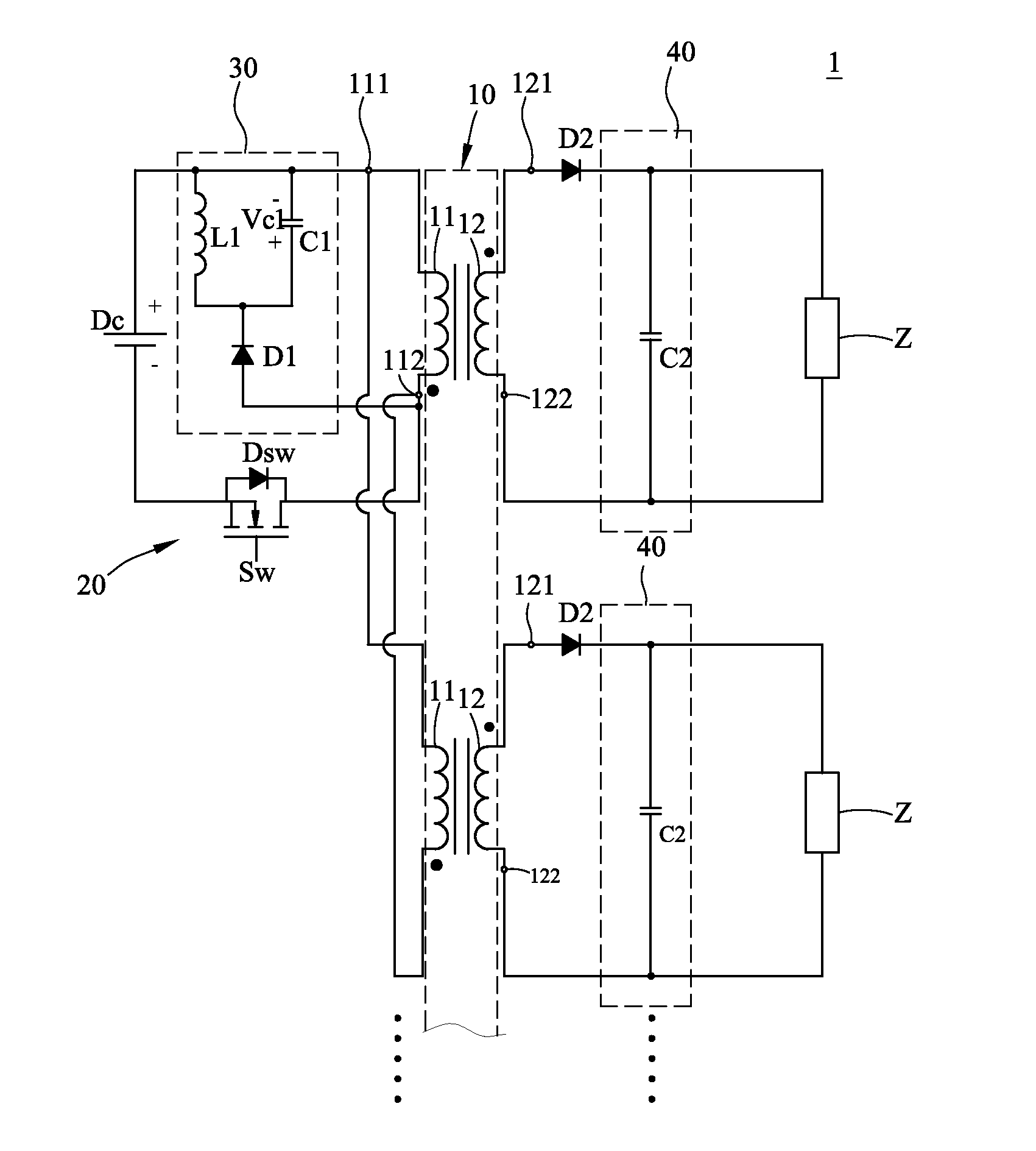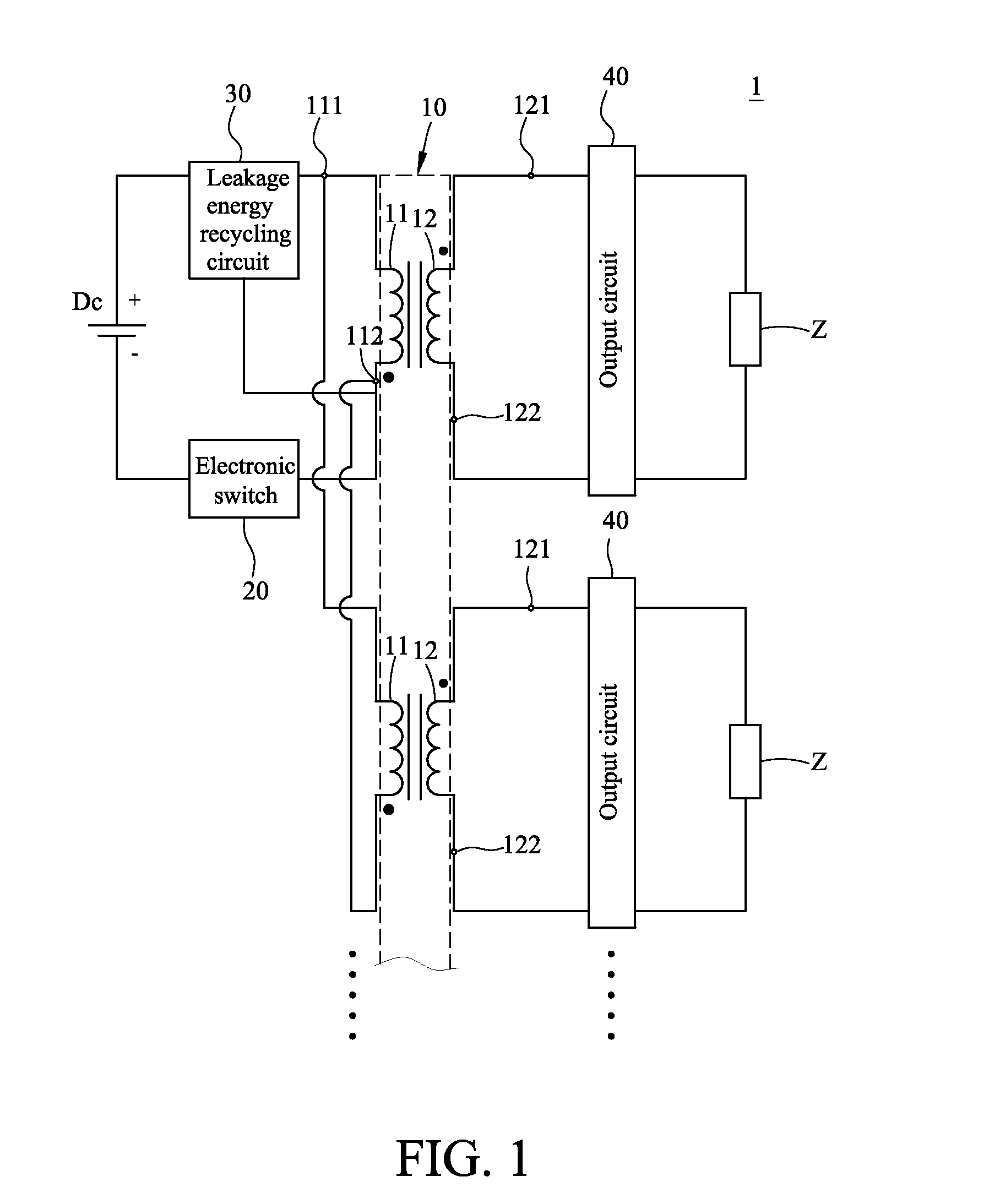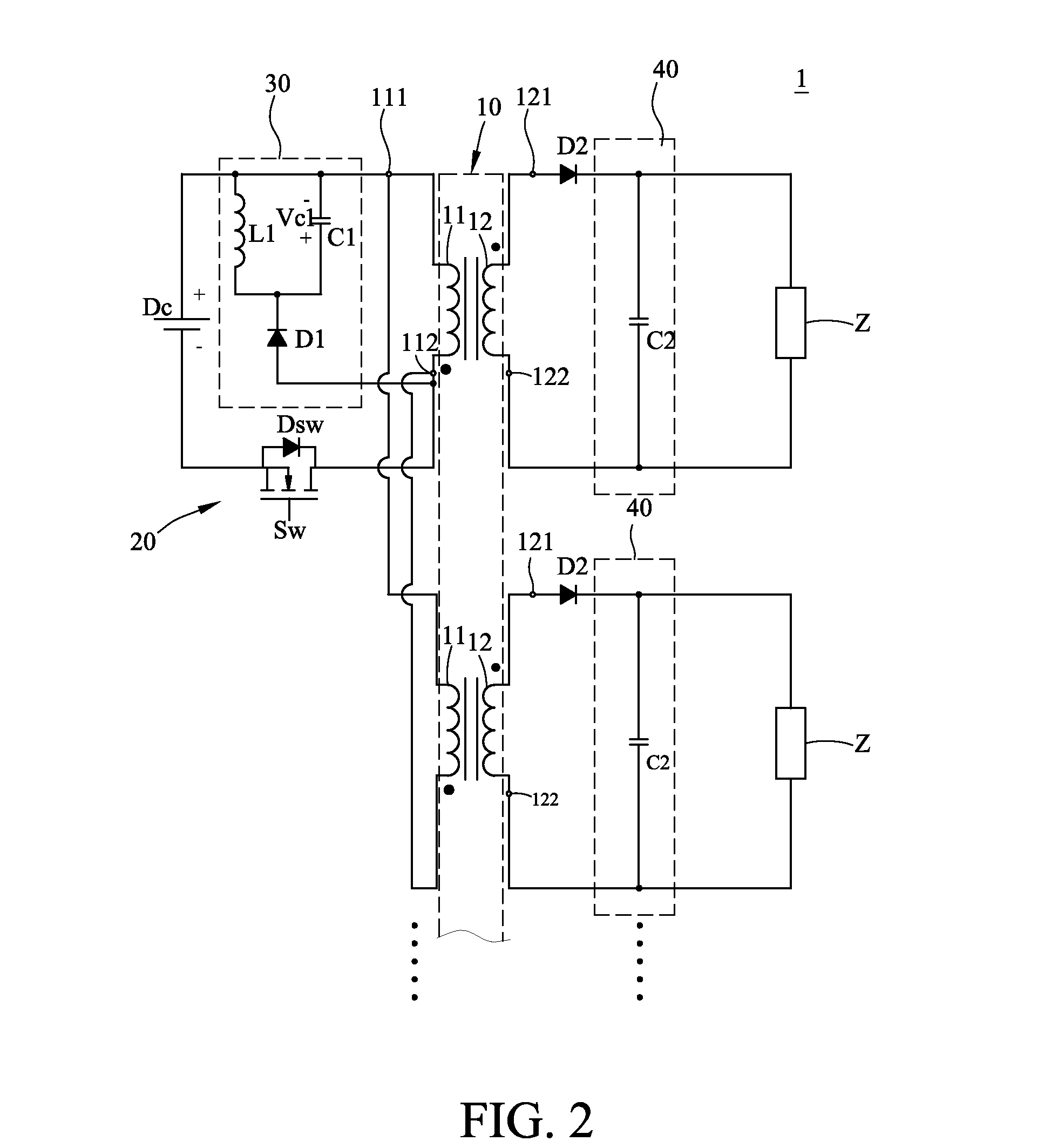Power conversion apparatus
a power conversion and power conversion technology, applied in the direction of electric variable regulation, process and machine control, instruments, etc., can solve the problems of enormous voltage spikes on less coupling coefficient of the transformer, and huge voltage spikes of the other components of the circuit, so as to achieve the effect of enhancing the performance of the power conversion apparatus, avoiding the reduction of ensuring the efficiency of the transformer
- Summary
- Abstract
- Description
- Claims
- Application Information
AI Technical Summary
Benefits of technology
Problems solved by technology
Method used
Image
Examples
first embodiment
[0037]Please refer to FIG. 1, which is the schematic view of the power conversion apparatus in accordance with the present invention. As shown in FIG. 1, the power conversion apparatus 1 is able to convert power of a direct current (DC) power supply Dc, and provide the converted power to a plurality of loadings Z. The power conversion apparatus 1 may include a transformer 10, an electronic switch 20, a leakage energy recycling circuit 30, and a plurality of output circuits 40.
[0038]The transformer 10 may include a plurality of primary windings 11 and a plurality of secondary windings 12, wherein the primary windings 11 may receive the power of the DC power supply Dc, and the secondary windings 12 may output the converted power. These primary windings 11 may be connected to each other in parallel to increase the energy transmission range. One end of the electronic switch 20 may be electrically connected to the primary windings 11; the other end of the electronic switch 20 may be elec...
second embodiment
[0044]Please refer to FIG. 2 and FIG. 3; FIG. 3 is the second schematic view of the power conversion apparatus in accordance with the present invention. With the aforementioned design, while the power conversion apparatus 1 is in operation, the primary windings 11 of the transformer 10 can be seen as an equivalent primary inductor Lm and an equivalent leakage inductor Lk connected to each other in series.
[0045]As shown in FIG. 3, when the electronic switch 20 allows the power of the DC power supply Dc to flow to the primary windings 11, the energy is stored in the equivalent primary inductor Lm and the equivalent leakage inductor Lk of the primary windings 11 through the electronic switch 20; at the same time, the second capacitor C2 may release energy to the corresponding loading Z. The first diode D1 may prevent the DC power supply Dc from directly charging the first capacitor C1 and the first inductor L1, and the second diode D2 may prevent the energy stored in the second capacit...
third embodiment
[0054]Please refer to FIG. 7, which is the schematic view of the power conversion apparatus in accordance with the present invention. FIG. 7 illustrates the usage situation of one embodiment of the power conversion apparatus according to the present invention. As shown in FIG. 7, the power conversion apparatus 1 can use a plurality of primary windings to transmit energy at the same time; accordingly, the power conversion apparatus can still effectively transmit energy to the loadings Z even if these loadings Z are stacked. Therefore, the above design can effectively improve the performance of the power conversion apparatus 1.
PUM
 Login to View More
Login to View More Abstract
Description
Claims
Application Information
 Login to View More
Login to View More - R&D
- Intellectual Property
- Life Sciences
- Materials
- Tech Scout
- Unparalleled Data Quality
- Higher Quality Content
- 60% Fewer Hallucinations
Browse by: Latest US Patents, China's latest patents, Technical Efficacy Thesaurus, Application Domain, Technology Topic, Popular Technical Reports.
© 2025 PatSnap. All rights reserved.Legal|Privacy policy|Modern Slavery Act Transparency Statement|Sitemap|About US| Contact US: help@patsnap.com



